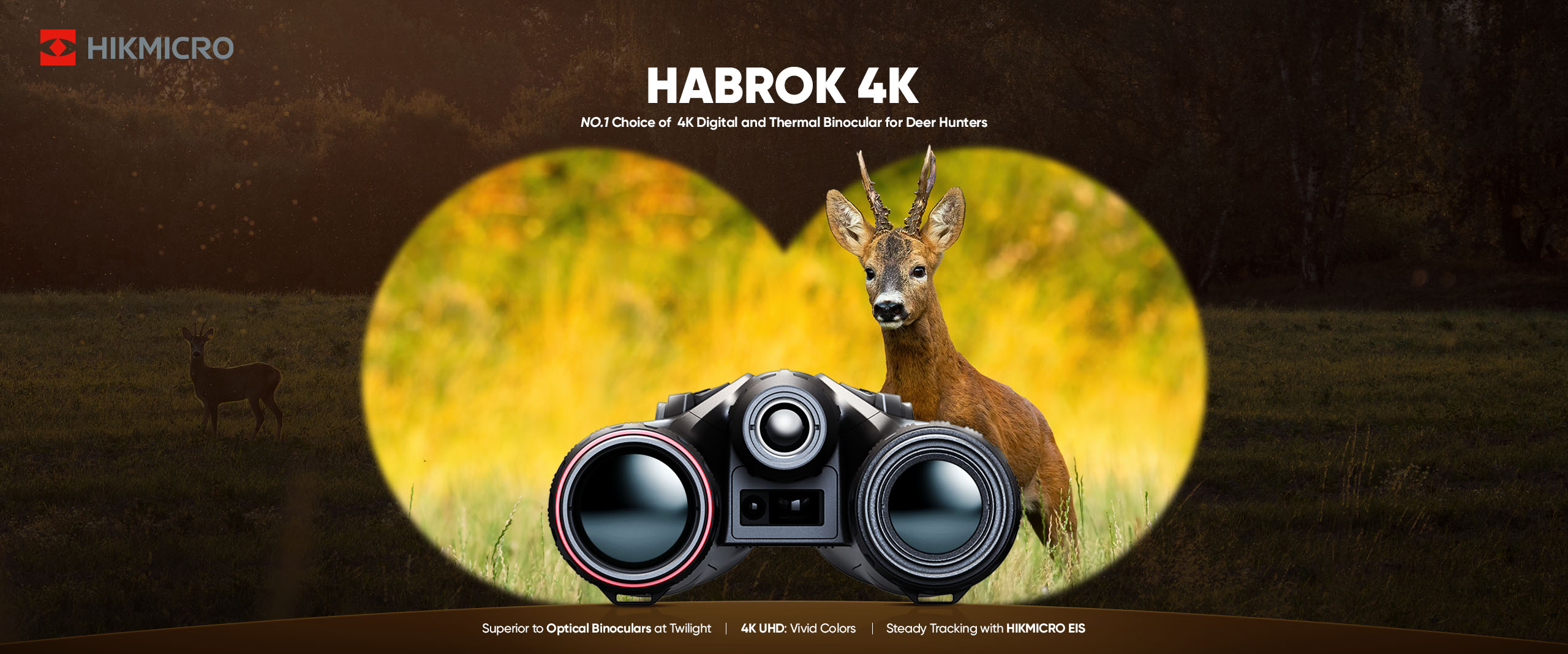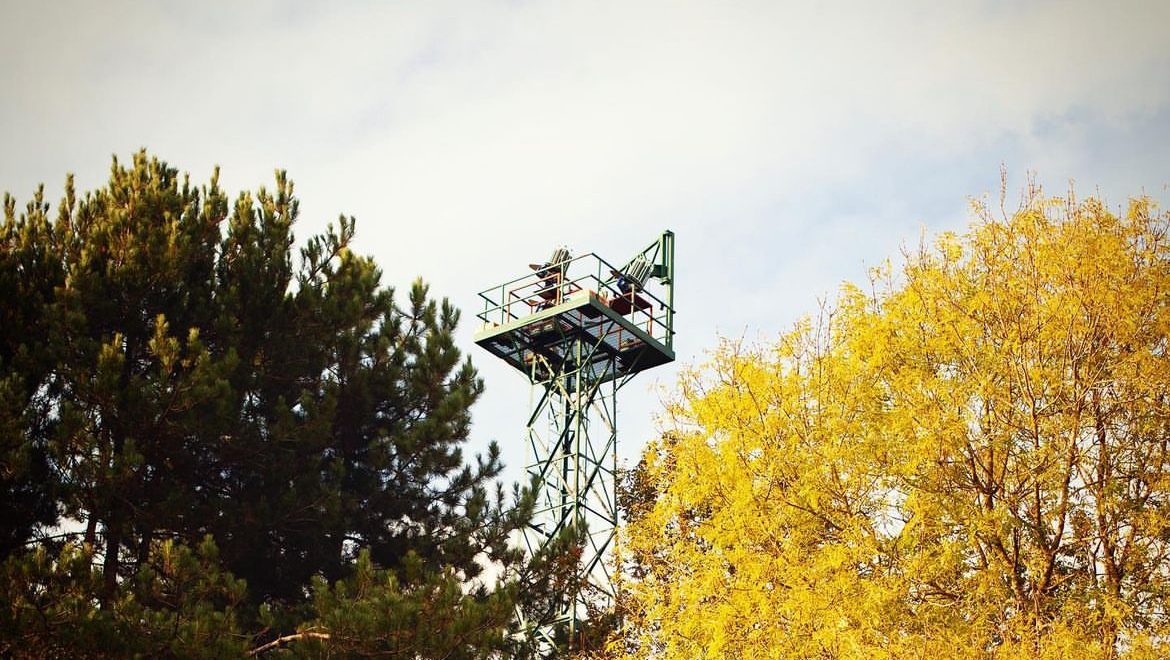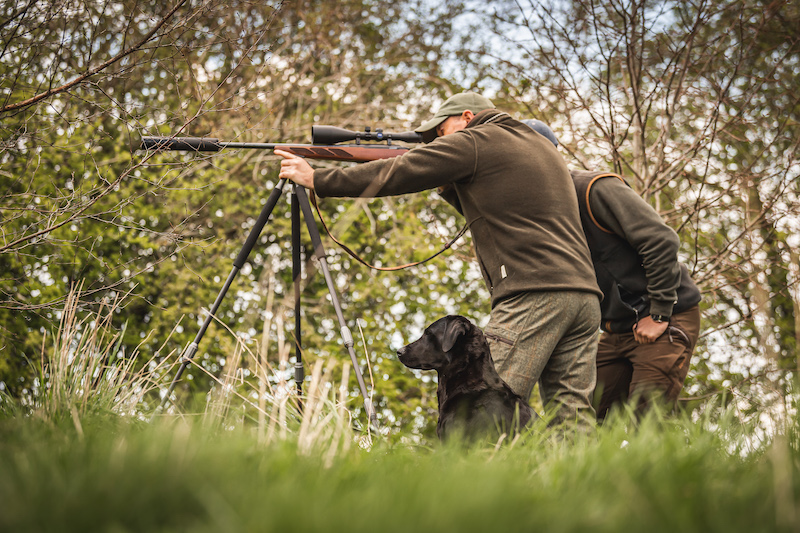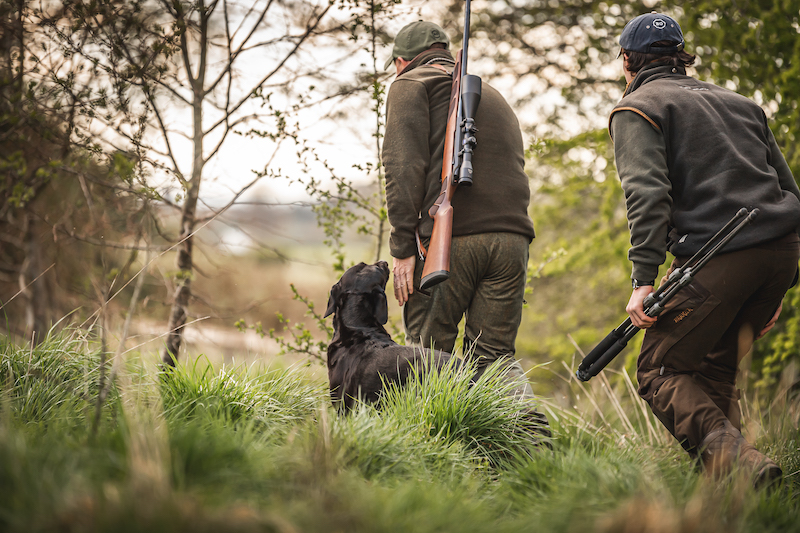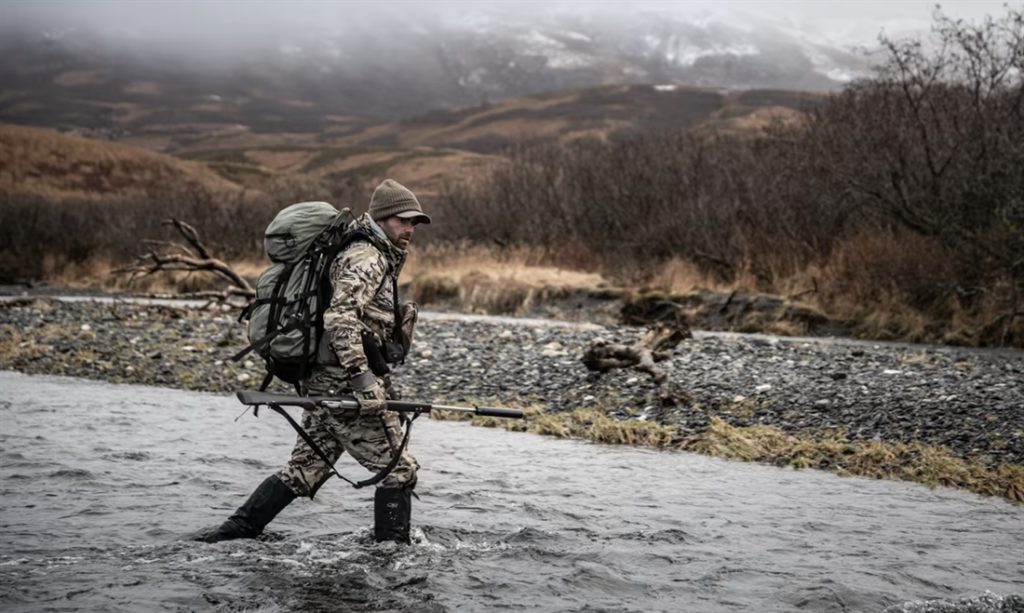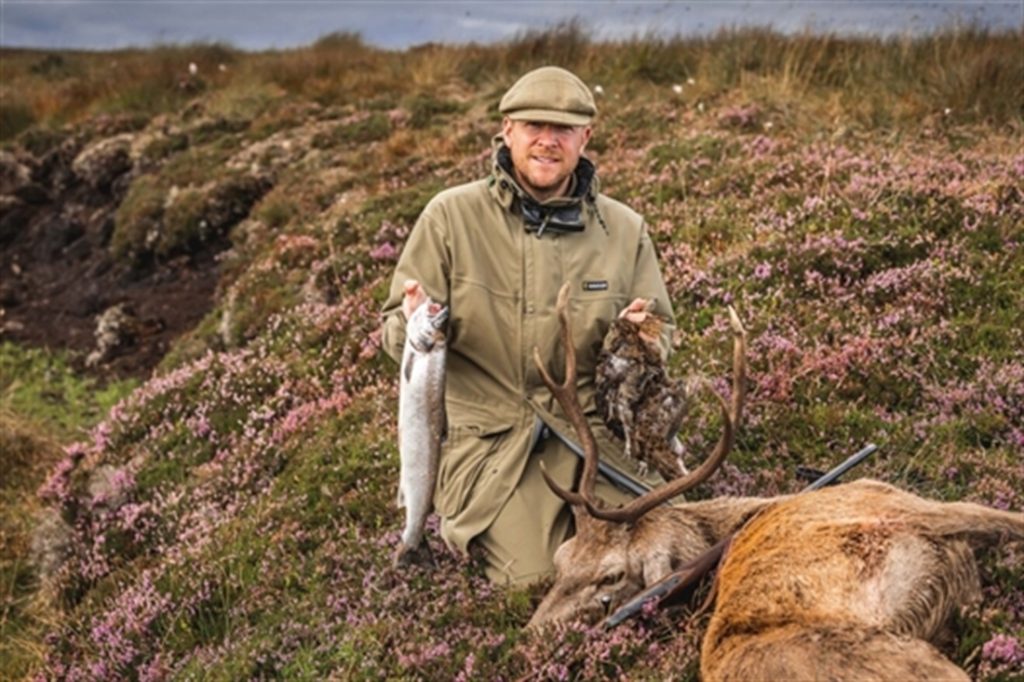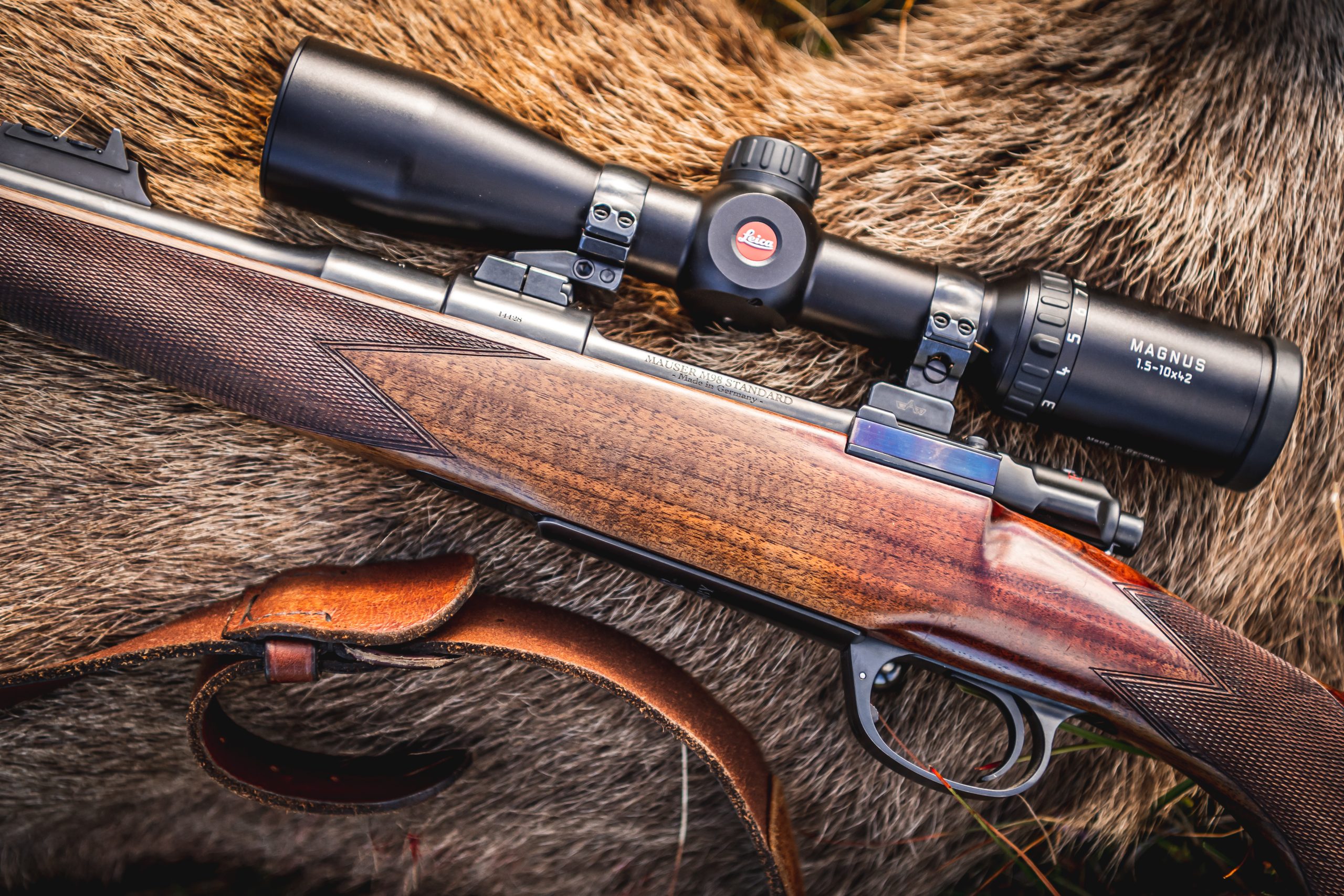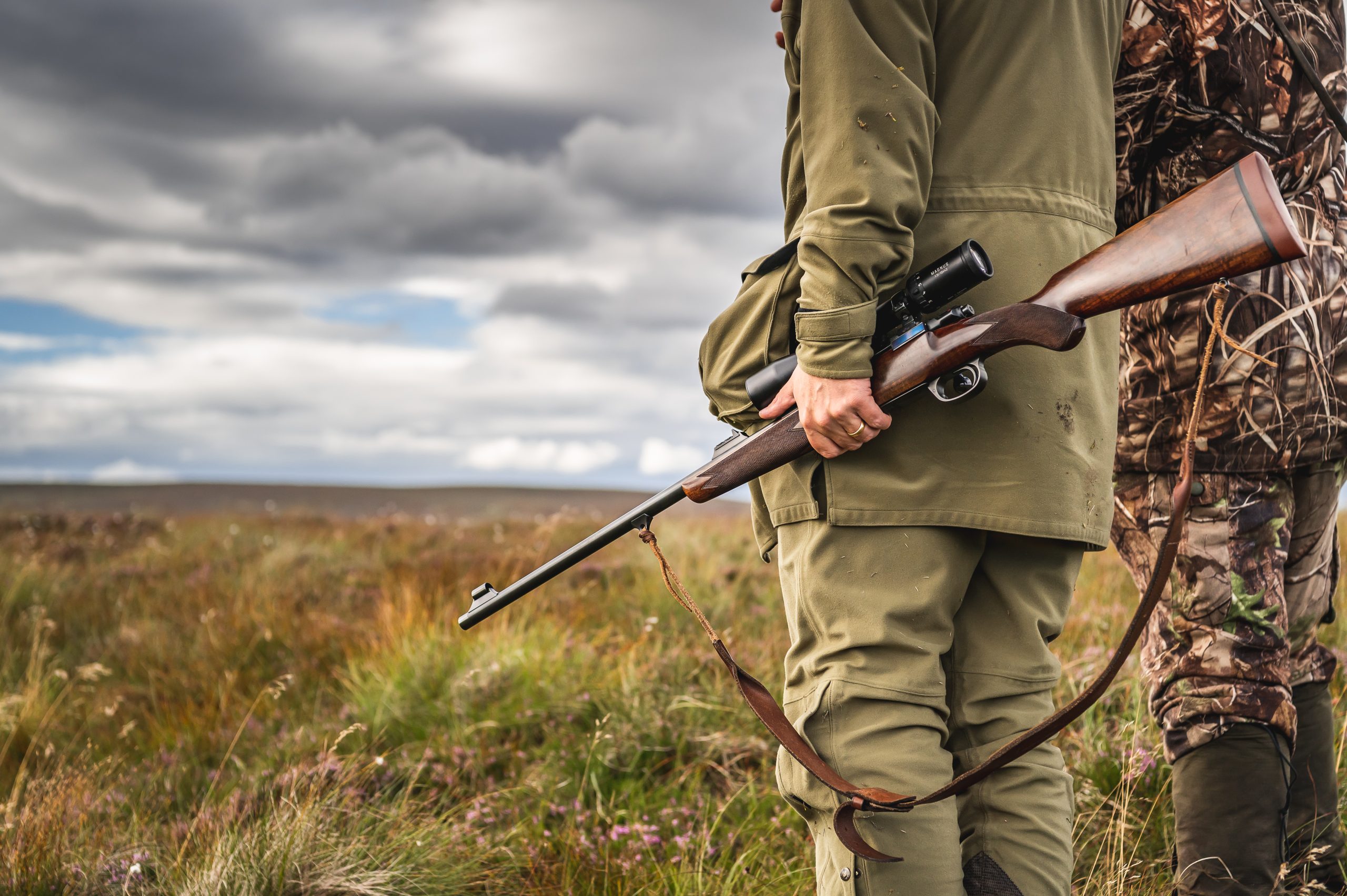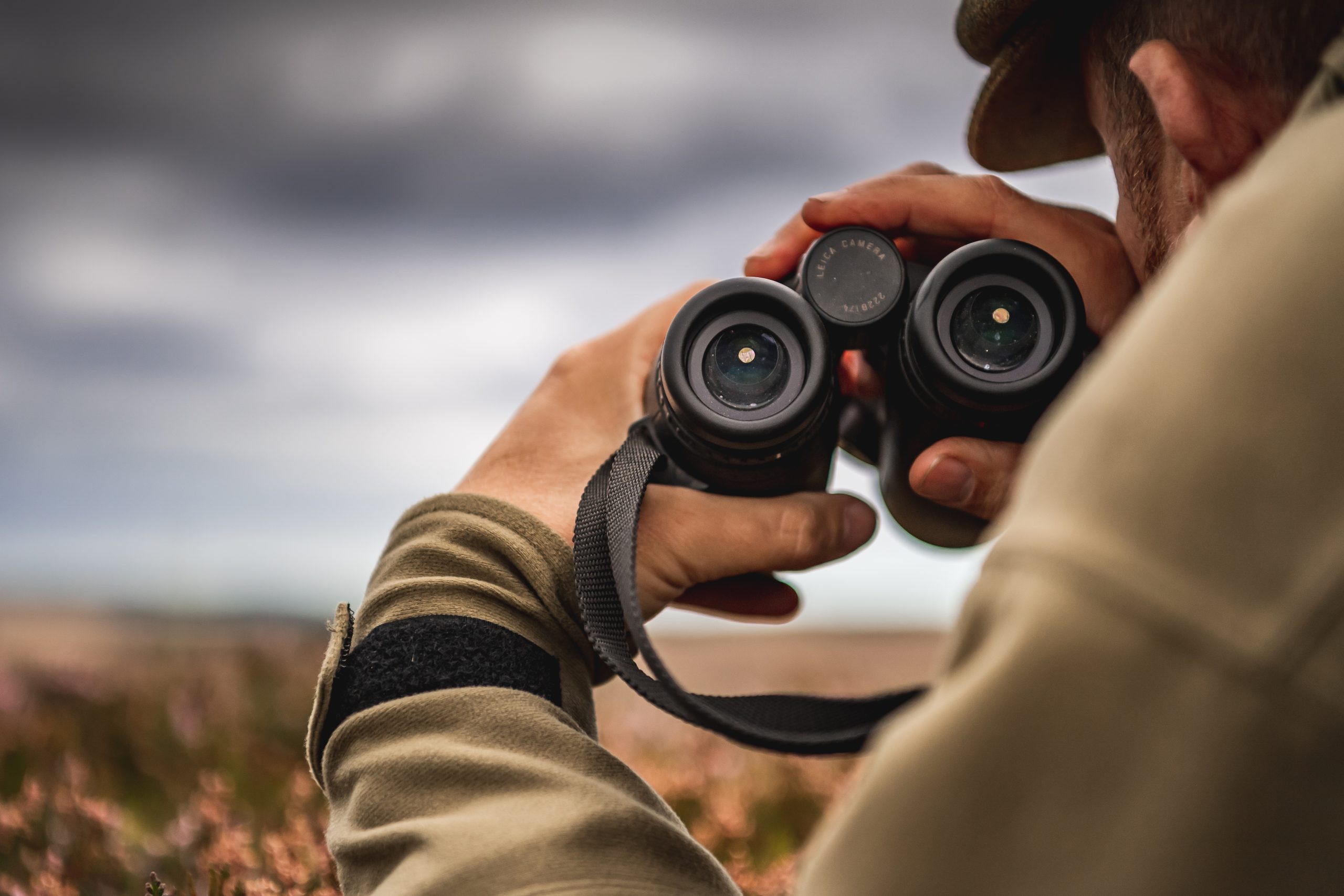Big game
Transferable skills
You don’t need a specialist deer dog for stalking, says professional gundog trainer Ben Randall who is out most evenings hunting roe and fallow with his labradors.
Would you like to appear on our site? We offer sponsored articles and advertising to put you in front of our readers. Find out more.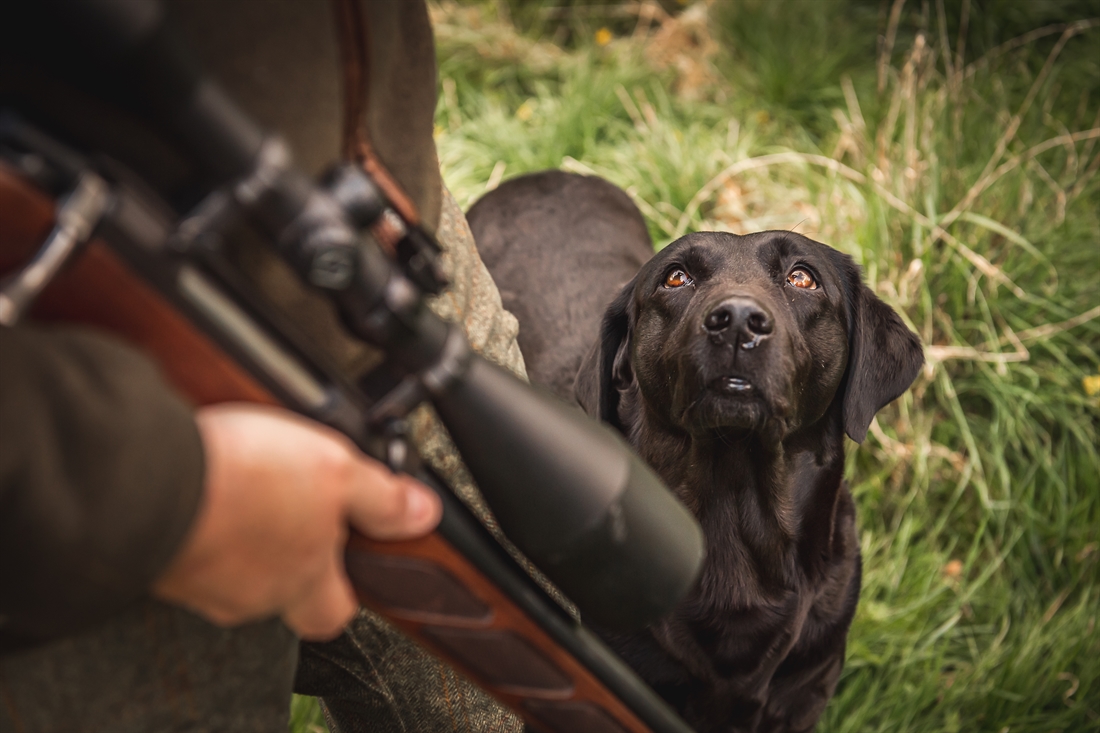
Like most of us, my gundogs have not had the chance to work much over the past year due to lockdown. As we emerge into the wider world once again, I am keen to get my dogs out and about. Now that roe are in season, I have been spending most evenings stalking locally with my 15-year old son Jack and six-year old labrador Nell. She is my top bitch, the one I always have on the peg with me. She is incredibly steady and ignores dead game falling around her until I give her the command to retrieve. She embodies the Aga dog concept – she is chilled around the house and steady in the field.
Now that she is six and deemed ‘fully trained’, I have eased off the high level training with her so that she has become even calmer and more relaxed. There’s less pressure in her life now. No more long retrieves. We have toned it down and let the younger dogs take over. She gave me three years incredible work on the shooting field, so she is now my chosen deer stalking companion. She has earned the right.
There are so many advantages to having a trained labrador with you when deerstalking. I should say here that you can of course stalk with any gundog breed, but I find labradors are most suited to this task. I don’t think spaniels are built for this work. They just don’t have the temperament. For me, stalking is recreation – a time to switch off from day-to-day work. I do not want to keep reminding an errant dog what is expected of them and my labradors all just seem to get it, requiring little or no input from me. Nell walks to heel perfectly, she is used to ignoring live game, plus I can stop her and direct her out to 300 yards. I can also recall her through multiple distractions. For instance, if a rabbit bolted right in front of her, she’d just ignore it. All the skills that she has been taught for the shooting field transfer perfectly when stalking deer. In fact, compared to sitting on a busy peg, stalking is easy work for a lab.
Many people that like deerstalking overlook taking a humble lab with them in favour of one of the specilaised European dog breeds, like the Bavarian mountain hound (BMH). I myself have a BMH named Roe. Compared to the labrador they are hard work. They are quirky and can be difficult to train. They tend to just use their instinct and natural ability rather than work with their handler as part of a team. Once a deer is shot, deer dogs tend to make a lot of noise and lack the calmness and stealth of a trained lab. I don’t want to put down the BMH breed, but anyone who has one will agree that they can be complicated dogs. They also have an incredibly noisy shake and bark a lot!
The point I am making is, don’t overlook taking your trained gundog out stalking with you this spring and summer. The experience will provide ample opportunities for you to assess your dog’s skillset and see how having last season off has affected their training. Hopefully you will have kept up with simple training exercises at home in the garden so the dog should be immaculately walking to heel and ignoring all distractions, right?!
If your gundog has never been deerstalking before, you could simulate the follow-up in your garden. Using a fishing rod, attach a blood-soaked deer foot to the end of the line. Go to six o’clock and cast the fishing rod out to 12 o’clock and then slowly retrieve the line back to 6 o’clock again. This way there is no foot scent of me anywhere. The trail will then be 50-60 yards. Now, resting your rifle on sticks with your dog sitting next to you, discreetly fire a starting pistol. Don’t let the dog see the starting pistol. The idea is to desensitise the dog to the sight and sound of the rifle. Then simulate unloading the rifle. Now point the dog to the fall and send her straight to it. The dog should hunt the line methodically and carefully which enables you to keep up with the dog. Always keep your dog in view. However if my dog has tracked a deer and she’s out of sight and I can’t see or hear her, I simply recall her back into vision, stop her, walk towards her and then give her the back / hunt command again and follow her back to the deer. Having the ability to stop and recall my labrador is a big advantage as there could be wire fences or main roads as potential danger.
Another aspect of stalking that my lab enhances is actually spotting deer. Nell regularly sees deer before me. Her hunting ability is astounding. She will be walking to heel, off the lead, and then suddenly stop and lock her legs when she scents or sees a deer. She remains silent. It is an incredible feeling working in unison with her. We feel like a proper team.
Some might question how a labrador would react to an injured deer. Even if an injured cock bird was spurring her she would still retrieve it because she knows it is her job. Touch wood, Nell has never had to follow-up an injured deer but I believe that she would bay it until I could get to it. She may not have the aggression of some of the big HPRs, but I would rather she just quietly followed the deer until it couched up naturally.
Some readers may use the summer months to breed their gundogs. Taking the bitch stalking is a great pre- and post-natal exercise as it is comparatively gentle and does not require anything too strenuous.
I would now never go stalking without a labrador. They enhance it so much. That feeling of them being completely at one with you. So, next time you are reaching for the rifle also take your gundog. You will be surprised how well their training for the shooting field transfers to deerstalking.
Related articles
Big game
SAKO & TIKKA: PASSION FOR PRECISION
UNLEASH YOUR PRECISION CAPABILITIES DOWN TO 0.5 MOA ACCURACY.
By Time Well Spent
Big game
The MacNab
The Macnab Challenge – a salmon, a stag and brace of grouse in one day – has its roots in a novel by John Buchan. Simon K Barr finally succeeds after 10 years of trying
By Time Well Spent
Get the latest news delivered direct to your door
Subscribe to Fieldsports Journal
Elevate your experience in the field with a subscription to Fieldsports Journal, the premium publication for passionate country sports enthusiasts. This bi-monthly journal delivers unparalleled coverage of game shooting, fishing and big game across the UK and beyond.
Each issue offers a stunning collection of in-depth features, expert opinions and world-class photography, all presented in a timeless yet contemporary design. By subscribing, you’ll gain access to authoritative content from plain-speaking writers who tackle complex subjects with confidence and experience.
Plus, UK subscribers enjoy exclusive benefits including £2 million Public Liability Insurance for recreational and professional use of shotguns, rifles and airguns. Whether you’re a seasoned shooter or an intrigued novice, a Fieldsports Journal subscription is your gateway to enhancing your field sports endeavors and staying connected to the country way of life.


Manage Consent
To provide the best experiences, we use technologies like cookies to store and/or access device information. Consenting to these technologies will allow us to process data such as browsing behavior or unique IDs on this site. Not consenting or withdrawing consent, may adversely affect certain features and functions.
Functional Always active
The technical storage or access is strictly necessary for the legitimate purpose of enabling the use of a specific service explicitly requested by the subscriber or user, or for the sole purpose of carrying out the transmission of a communication over an electronic communications network.
Preferences
The technical storage or access is necessary for the legitimate purpose of storing preferences that are not requested by the subscriber or user.
Statistics
The technical storage or access that is used exclusively for statistical purposes.
The technical storage or access that is used exclusively for anonymous statistical purposes. Without a subpoena, voluntary compliance on the part of your Internet Service Provider, or additional records from a third party, information stored or retrieved for this purpose alone cannot usually be used to identify you.
Marketing
The technical storage or access is required to create user profiles to send advertising, or to track the user on a website or across several websites for similar marketing purposes.

